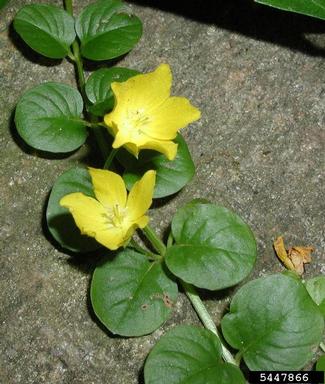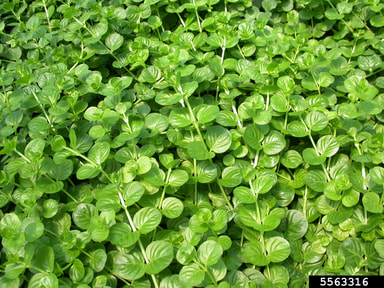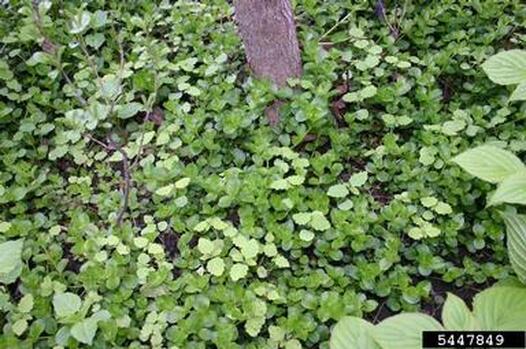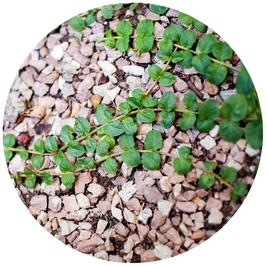|
Moneywort/Creeping Jenny
Lysimachia nummularia Sometimes called creeping Jenny or creepy yellow loosestrife, moneywort is a water-loving invasive species. Native to Eurasia, it can be found in wetlands, in wet meadows, and along the banks and shores of streams, rivers, and lakes. That being said, it is not a true aquatic species.
Moneywort is a common addition in planters and baskets that are displayed outdoors. This is often the cause of escape - either directly from the display pot or when they are disposed of on location at the end of the season. As its name suggests, moneywort "creeps" along the ground, forming low, dense mats which eventually crowd out any competing species. Bright, yellow flowers bloom from mid-summer though August. The leaves are very distinct and resemble small coins, opposite from one another. Photo credits: Leslie J. Mehrhoff, University of Connecticut, bugwood.org | Shaun Winterton, Aquarium and Pond Plants of the World, Edition 3, USDA APHIS PPQ, Bugwood.org | Candace Madonna, TheSpruce.com
Learn More About Moneywort:
|
Moneywort Facts
Management Options
|
|
Created by the Northwest Michigan Invasive Species Network
|
Go Beyond Beauty is funded by the Michigan Invasive Species Grant Program (MISGP)
|






